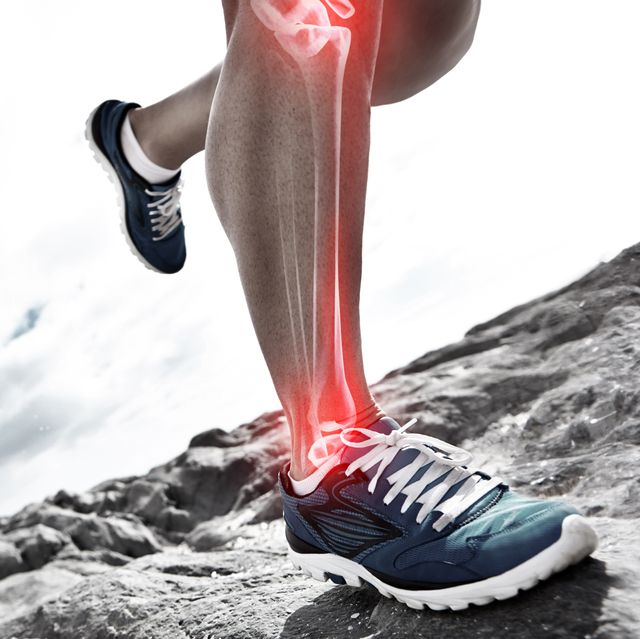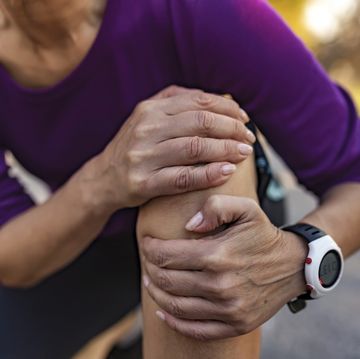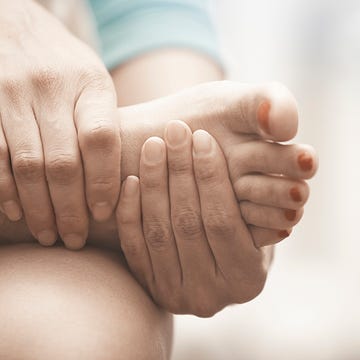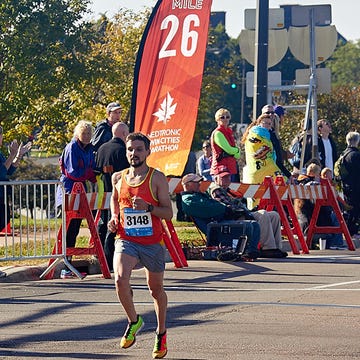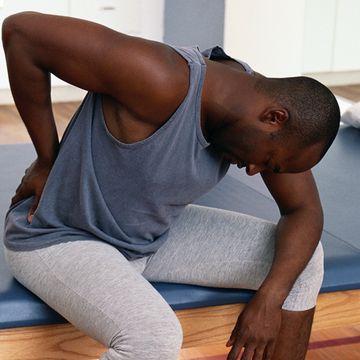- A new study investigated whether running faster really causes more strain on the shin bones, potentially leading to greater stress fracture risk.
- Researchers actually found that running slower puts a greater load on the shin bones.
- Experts caution that recovery days are still important to protect your body in other ways—don’t consider these findings your excuse to skip easy days.
It’s a diagnosis no runner wants to hear: stress fracture, or a small crack in the surface of bone often caused by overuse.
While there are several factors that contribute to developing stress fractures—say, diet, recovery, shoes, and running form—people often point a finger at training intensity. How many times has a coach warned you not to go “too fast, too soon, or too often,” or else you’ll wind up hurt?
The thinking behind this refrain is that recovery, such as an easy day after a hard workout, helps reduce your risk of injury. It seems reasonable to assume, then, that running slowly causes less strain on our legs than running fast, since we’re “recovering” during those easy miles.
But that might not actually be the case: According to new research from the University of Maryland, fast-paced running doesn’t put any more pressure on the tibia (shin bone)—a common site of stress fractures—than easy running.
In the study, 43 recreational runners—29 women and 14 men, ages 18 to 49 years old—were asked to run around a 50-meter indoor track at a self-selected speed of fast (but not all-out sprint), moderate, and slow for three laps each. Each wore reflective sensors on their pelvis, below the knee of their dominant leg, and on both of their feet. Then, they began the trial, running over force plates embedded on the track that measured how much impact their shins bore with each stride.
The researchers were interested in finding the runners’ cumulative tibia load at the various speeds. To calculate this number, they multiplied the outcome of three variables: tibial load (the pressure applied to the tibia during ground contact), vertical average loading rate (how quickly your body weight is applied to the leg as your foot makes contact with the ground), and free moment (the motion of the bottom of the foot on the ground).
Study author Jessica Hunter, Ph.D.(c), and her colleagues predicted that running continuously at a moderate speed would have the same impact on the legs as running the same distance half-fast and half-slow. (For example, a moderate-paced four mile run compared to a workout consisting of a mile warmup, two mile tempo, and mile cooldown.)
“We weren’t sure if the cumulative loads would be affected more by the increase in load or the longer strides you take when you run faster,” said Hunter. “We thought was possible that these two factors might ‘cancel out’ any differences between speeds.”
The researchers found that it wasn’t running at fast speeds that causes the most tibial load. In fact, it was the slowest-paced running that resulted in the most strain. That’s because when the runners went easy, they took shorter strides, and thus were on the ground more often than when they were going fast. That meant that there was more opportunity for impact, since the runners were hitting the ground more often.
Running at a normal, or moderate, pace actually caused less cumulative tibia load than running the same distance in fast or slow speeds.
“Of the variables we tested, the difference in step length between the fast and slow speeds had the greatest effect on cumulative tibial load,” Hunter said. “Since step lengths were shorter at slower speeds, subjects needed to take more steps while running slower. Even though the peak load [i.e., the force sustained in each landing] was lower at the slow speed, the number of steps required to cover the distance pushed the cumulative tibial load at slow speed above that of the cumulative load at fast speed.”
The researchers concluded that running fast doesn’t contribute more to cumulative tibial load than slow running—so runners shouldn’t be afraid to incorporate intervals into their training.
[Blast through a series of HIIT sessions to boost running strength and prevent injury with the IronStrength Workout.]
Still, remember that while picking up the pace may not increase the amount of impact our shins endure, speed does affect us in other ways. For one, running fast demands a lot more power from our muscles and bones, which is why we need recovery days to heal before the next hard effort.
Also, if you run back-to-back speed workouts—or do all of your runs at a tough threshold pace—without fueling properly, you might raise your risk of injury, as your body doesn’t have the energy it needs to recover.
“It’s too early to make recommendations for how runners can use this information to improve their training habits,” said Hunter, who’s interested in next studying how fatigue affects load during a run. “Hopefully our results combined with future research on cumulative load will provide greater insight.”

Hailey first got hooked on running news as an intern with Running Times, and now she reports on elite runners and cyclists, feel-good stories, and training pieces for Runner's World and Bicycling magazines.
